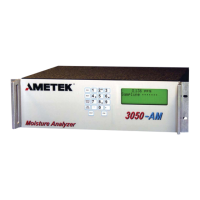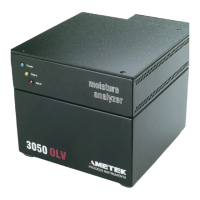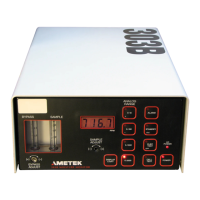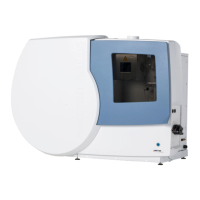14 3050-OLV Division 2 Sample System
Sample System Options
Back Pressure Regulator
The 3050-OLV can operate with an exhaust pressure from 0 to 15 psig, and the sensor measure-
ments (i.e. - the moisture readings) are automatically compensated for the measured pressure.
However, for proper operation of the analyzer, the exhaust pressure that the analyzer sees must
remain stable. If the 3050-OLV is to be vented to an exhaust line with varying pressure, AM-
ETEK recommends the use of a back pressure regulator (part number 305426901S) to stabilize
the outlet pressure of the analyzer.
Contaminant Trap
When using the 3050 OLV on sample streams that are likely to contain small amounts of heavy
hydrocarbons, glycols, compressor oils, or other agents that could potentially foul the QCM
sensor, AMETEK recommends the use of a contaminant trap (part number 305007901) in series
with the system dryer (see Figure 1). The contaminant trap removes thesepotential fouling
agents from the reference-gas stream, and thereby reduces the amount of these materials that
the QCM sensor is exposed to. AMETEK also recommends that the Contaminant Trap Cartridges
(part number 305527901S) are changed at regular intervals (monthly), as part of the analyzer’s
normal maintenance cycle. By proper use of the contaminant trap, and configuring the analyzer
for the sensor savor mode, the life time of the QCM sensor can be extended.
Liquid Separator
When using the 3050 OLV on sample streams that are likely to contain entrained liquids, AM-
ETEK recommends the use of a liquid separator/trap (part number 305008901S). The liquid
separator is a membrane filter system, designed to remove any entrained liquids from the
sample-gas stream. This device is required to prevent any liquid phase material from entering
the analyzer, and causing permanent damage to the QCM sensor. AMETEK also recommends
that the membrane filters (part number 305529901S) are changed at regular intervals (every 3
months), as part of the analyzer’s normal maintenance cycle.
Flame Arrestor
The use of an in-line flame arrestor is required for bringing the sample gas into, or out of, the
explosion proof casting in a Div 1 (or Zone 1) area. These devices must not be removed from
the sample system.
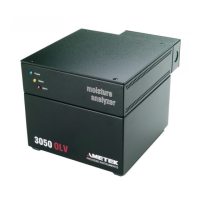
